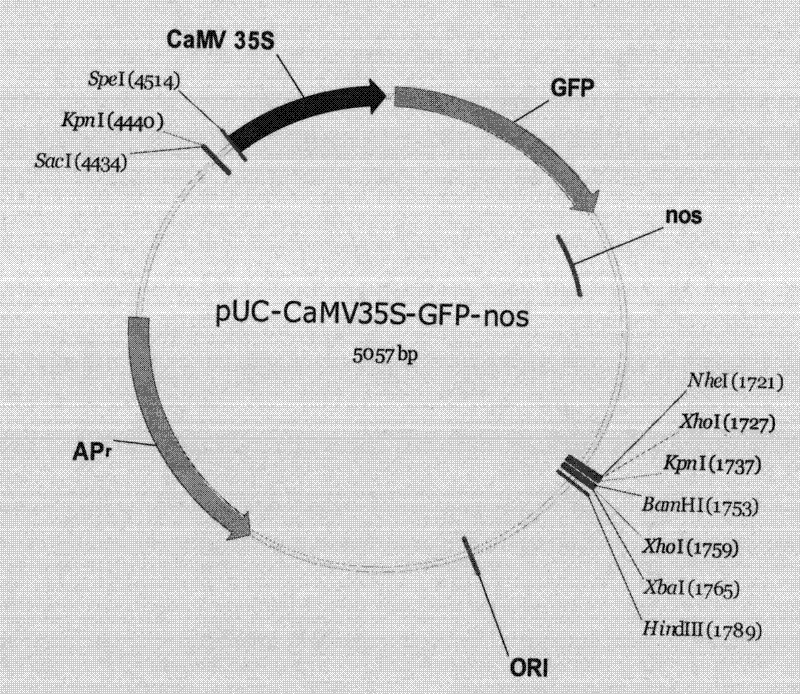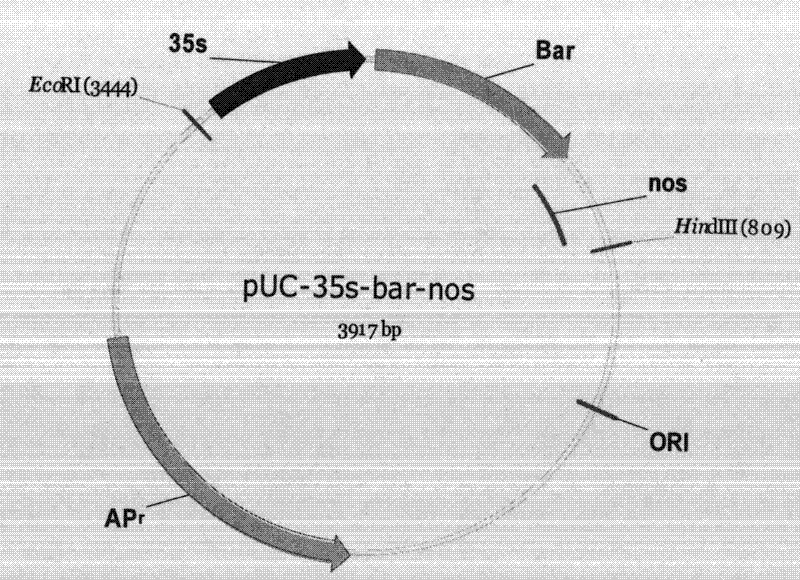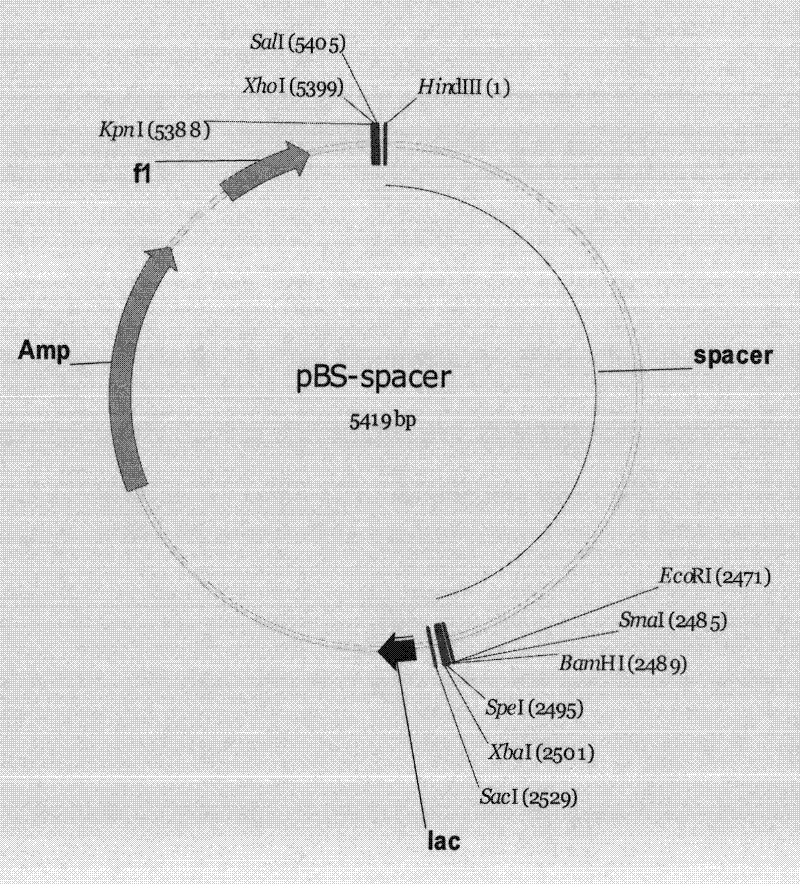A gene automatic deletion binary system and its related plant expression vector for biosafety control of exogenous genes in sexually propagated plants
A technology for plant expression vectors and exogenous genes, applied in the field of safety control of transgenic plants, can solve problems such as the control of biological safety hazards of exogenous genes in sexually propagated plants, and achieve the effect of solving hidden dangers of biological safety and stabilizing inheritance
- Summary
- Abstract
- Description
- Claims
- Application Information
AI Technical Summary
Problems solved by technology
Method used
Image
Examples
Embodiment 1
[0070] [Example 1] DNA extraction and PCR amplification of the target fragment sequence
[0071] 1. Extraction of DNA
[0072] Select 0.3-0.5g of young tobacco leaves, quickly grind them into white powder in liquid nitrogen, transfer to a 10mL centrifuge tube, add 3mL of DNA extraction buffer preheated at 65°C, and shake and mix quickly. Water bath at 65°C for 45 minutes, during which time mixing 2-3 times. Then add 1mL 5mol / L KAc, ice bath for 20min. Extract once with an equal volume (4 mL) of chloroform:isoamyl alcohol (24:1) (10,000 r / min, centrifuge at 25°C for 10 min). Take the supernatant, add 2 / 3 times the volume of -20°C pre-cooled isopropanol, mix well, and let stand at room temperature for about 30 minutes. Pick out the flocculent precipitate, rinse twice with 75% ethanol, and rinse once with absolute ethanol. Blow dry at room temperature and resuspend in 600 μL TE. Add 1 μL RNaseA (10 mg / mL), and treat at 37°C for 1 hour to remove RNA in the sample. Then use p...
Embodiment 2
[0082] [Example 2] Construction of binary expression vector
[0083] 1. Acquisition of pOp / LhG4 transcriptional activation system
[0084] 1.1 Cloning of the pOp target promoter
[0085] A pair of primers (as shown in SEQ ID NO.1 and SEQ ID NO.2) were designed according to the pOp promoter sequence on the plasmid pH-pOp(A) (Moore et al., 2006), and the 5' end and The pOp promoters containing HindIII and XbaI endonuclease recognition site sequences at the 3' ends were cloned into the pGEM-T-easy vector to obtain the pGEM-t-pOp vector. Confirmed by sequencing.
[0086] 1.2 Cloning of LhG4ATO transcriptional activator gene
[0087] According to pBIN-LR-LhGR 2 (Craft et al., 2005; Samalova et al., 2005) LhG4 on plasmid ATO Gene sequence design a pair of primers (as shown in SEQ ID NO.3 and SEQ ID NO.4), PCR amplification obtains LhG4 containing BamHI and SalI endonuclease recognition site sequences at the 5' end and 3' end respectively ATO Gene, T cloned into the pUCm-T vect...
Embodiment 3
[0099] [Example 3] Construction of plant expression vector
[0100] 1. Contains pOp:cre int Construction of the Effector plant expression vector of the element
[0101] In order to construct the Effector plant expression vector, first construct pOp-cre int - T3A expression element. Use a pair of primers (as shown in SEQ ID NO.32 and SEQ ID NO.33) to amplify from the pER8 vector to obtain the termination sequence T3A, and introduce the XhoI endonuclease recognition site at its 5' end, T-cloning into pUCm-T On the vector, the pUC-T-T3A vector was generated. Confirmed by sequencing. Then, SacI / XbaI excised the pOp promoter from the pGEM-T-pOp vector, XhoI / BglII excised the T3A terminator sequence from the pUC-t-T3A vector, and XbaI / SalI excised the cre int Gene from pUC-T-Cre int Cut off the vector, and the three fragments were ligated into the SacI / BglII digested pUC vector to obtain pUC-pOp-Cre int -T3A vector, which contains pOp-Cre int - T3A expression element.
[0102...
PUM
 Login to View More
Login to View More Abstract
Description
Claims
Application Information
 Login to View More
Login to View More - R&D
- Intellectual Property
- Life Sciences
- Materials
- Tech Scout
- Unparalleled Data Quality
- Higher Quality Content
- 60% Fewer Hallucinations
Browse by: Latest US Patents, China's latest patents, Technical Efficacy Thesaurus, Application Domain, Technology Topic, Popular Technical Reports.
© 2025 PatSnap. All rights reserved.Legal|Privacy policy|Modern Slavery Act Transparency Statement|Sitemap|About US| Contact US: help@patsnap.com



